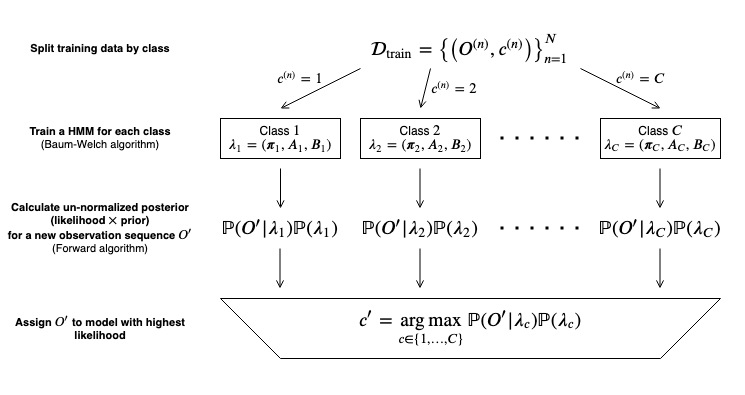A machine learning interface for isolated sequence classification algorithms in Python.
Project description
A machine learning interface for isolated sequence classification algorithms in Python.
Introduction
Sequential data is one of the most commonly observed forms of data. These can range from time series (sequences of observations occurring through time) to non-temporal sequences such as DNA nucleotides. Time series such as audio signals and stock prices are often of particular interest as changing patterns over time naturally provide many interesting opportunities and challenges for machine learning.
This library specifically aims to tackle classification problems for isolated sequences by creating an interface to a number of classification algorithms.
Despite these types of sequences sounding very specific, you probably observe some of them on a regular basis!
Some examples of classification problems for isolated sequences include classifying:
- a word utterance by its speech audio signal,
- a hand-written character according to its pen-tip trajectory,
- a hand or head gesture in a video or motion-capture recording.
Features
Sequentia offers the use of multivariate observation sequences with varying durations using the following methods:
Classification algorithms
- Hidden Markov Models (via Pomegranate [1])
Learning with the Baum-Welch algorithm [2]- Multivariate Gaussian emissions
- Gaussian Mixture Model emissions (full and diagonal covariances)
- Left-right and ergodic topologies
- Approximate Dynamic Time Warping k-Nearest Neighbors (implemented with FastDTW [3])
- Custom distance-weighted predictions
- Multi-processed predictions
Example of a classification algorithm: a multi-class HMM isolated sequence classifier
Preprocessing methods
- Centering, standardization and min-max scaling
- Decimation and mean downsampling
- Mean and median filtering
Installation
pip install sequentia
Documentation
Documentation for the package is available on Read The Docs.
Tutorials and examples
For tutorials and examples on the usage of Sequentia, look at the notebooks here.
References
Contributors
All contributions to this repository are greatly appreciated. Contribution guidelines can be found here.

Edwin Onuonga ✉️ 🌍 |
|---|
Sequentia © 2019-2021, Edwin Onuonga - Released under the MIT License.
Authored and maintained by Edwin Onuonga.
Project details
Release history Release notifications | RSS feed
Download files
Download the file for your platform. If you're not sure which to choose, learn more about installing packages.


















